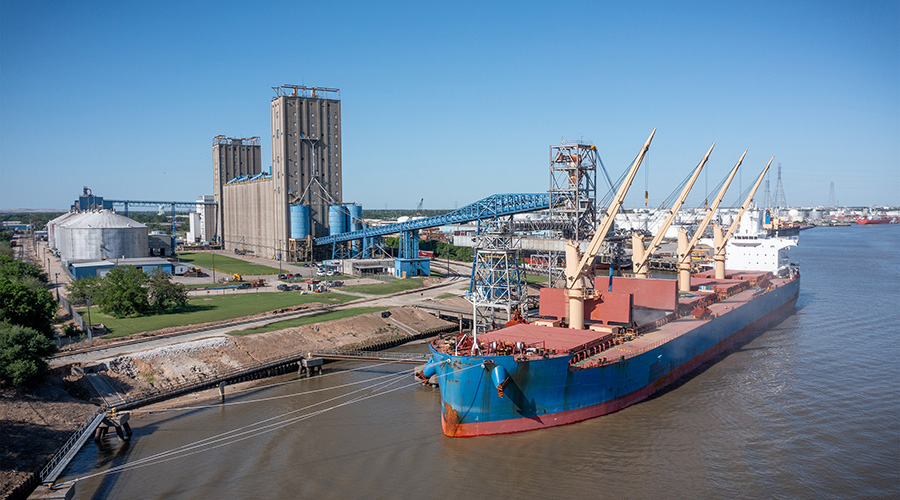Port of L.A.'s Seroka pledges to earn back cargo
1/31/2023
By Grace Renderman, Associate Editor
The Port of Los Angeles long has been the United States’ largest container port in terms of cargo volume, but in the wake of elongated dockworker contract negotiations, shippers seeking faster service have been shifting cargo away from L.A. to ports on the U.S. East Coast and Gulf of Mexico.
One result: The Port of New York and New Jersey (PANYNJ) in 2022 came close to topping L.A. in terms of cargo volume, falling 417,494 20-foot equivalent units (TEUs) short in full calendar-year figures. It was the East Coast port’s first time recording more than 9 million TEUs processed in a single year, according to CNBC. Between August and November 2022, PANYNJ handled more containers than L.A. on a monthly basis. The port slipped back into second place behind L.A. in December.
Despite the recent setbacks, the L.A. port will bounce back, says Executive Director Gene Seroka.
“We've been the number-one container port in the United States now for 23 consecutive years. [A] couple of months really doesn't create a trend, in my eyes,” he says.
Seroka primarily attributes the slip in market share to the stalemate between the International Longshore and Warehouse Union, which represents more than 22,000 dockworkers on the West Coast, and the Pacific Maritime Association, which represents ports and ocean carriers. Contract negotiations began in May 2022. The previous agreement expired July 1, 2022.
Fear of a potential work stoppage has led shippers to move cargo away from the West Coast and find new routes through other ports, Seroka says. President Joe Biden, U.S. Transportation Secretary Pete Buttigieg and Labor Secretary Marty Walsh have made multiple personal visits to L.A. and other affected ports in an attempt to speed up negotiations.
“I'm disappointed specifically because we know in this industry that these contracts are always long,” Seroka says. “Collective bargaining is hard. In addition to a coast-wide framework for 22,000 dock workers and 75 companies, there are 29 local agreements that have to be finalized and codified as part of this bargaining.”
With the Trans-Pacific Maritime Conference coming up at the end of February, the clock is ticking down to when importers and exporters begin their annual contracting with liner shipping companies, he says. The conference serves as a platform for business negotiations and networking among companies participating in the international container shipping supply chain.
If labor optics are still muddy by then, it could hurt the port’s ability to gain business, Seroka says.
Regardless, Seroka believes the port has more to do to win back what it’s lost.
“It hasn't been enough to convince the importers and exporters to keep their cargo here in L.A. because they believe that a work stoppage, a strike, a job action is imminent,” he says. “To the contrary, the rank-and-file [members] … are out there working every day, and the productivity's never been higher.”
Man with a plan
To earn back market share, Seroka has a three-pronged plan that will involve continued work at the negotiation table, meetings with shippers in Asia, Europe and other continents to “share the ground truth with decision-makers” to ensure transparency with shippers and improve port service, he says. Service improvements include a new port-wide reservation system to boost exports, which Seroka says will be launching soon, and a warehousing module to advertise to potential tenants and buyers the 2 billion square feet of warehousing space located at L.A. — the largest amount of space at any port complex in the world, Seroka says.
L.A. also uses the Port Optimizer software created in partnership with Wabtec. The cloud-based software integrates data from across the port complex to monitor in real time information on container moves, status changes and asset management. The information is accessible to cargo owners, ocean carriers (including Non-Vessel Operating Common Carriers), marine terminals, motor carriers, shippin lines, chassis providers and railroads.
“Folks can get a real good feel quickly as to how we're performing and where improvements need to be made … isolating issues before they become problems,” he says.
The port is anticipating first-quarter cargo volumes to be light due to high retail inventory and overall 2023 volumes to be lower than 2022, Seroka says. He expects a decrease of 2% to 5% in container volume compared to the previous year’s total. Plus, the U.S. retailers’ high inventory has led to a lengthy expected Lunar New Year break of three to four weeks compared to the traditional seven to 10 days because of softening demand.
Not all shippers will be convinced to return, Seroka acknowledges. But that’s just another reason he and his team plan to try harder to prove the port’s worth.
“As supply chains find their way to certainty, folks will be a little bit hesitant to shift back,” Seroka says. “We've got to be even better than we thought we had to [be].”

